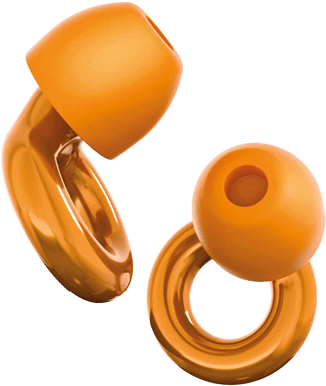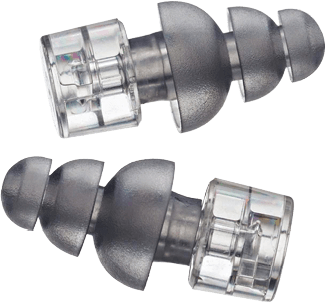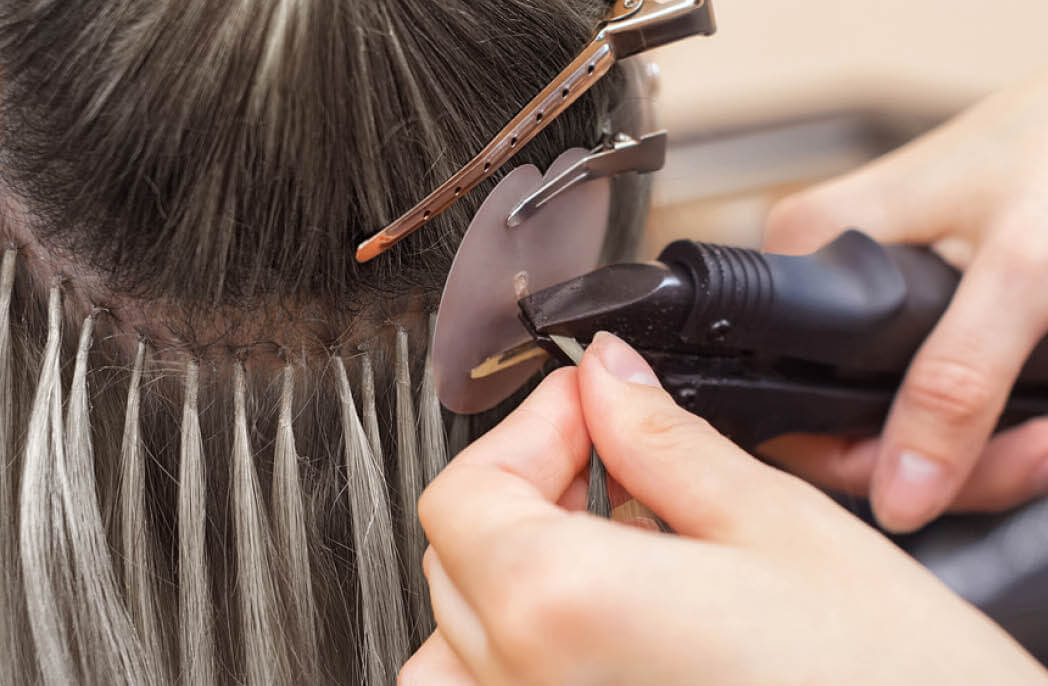This Is 50
Will Your Kids Accept Your New Love?
How to introduce your teens to your serious new partner—with a minimum of drama

AFTER HER DIVORCE, Oksana Marafioti, 49, a writer in Las Vegas, spent 10 years dating for fun. Then, in 2021, she met her current partner, Tyler. “This felt different,” she recalls. A few months in, she told her two sons that she wanted them to meet her new beau. “Great,” the then 14-year-old son responded, only half joking. “You are going to ruin my life!”
It’s a common dilemma among single parents: how to introduce a partner to a skeptical or reluctant teenager.
According to pediatric health psychologist Emily Edlynn of Oak Park, Illinois, your split from your child’s other parent can influence how the introduction goes. “If there is a lot of unresolved emotional distress, adding a new adult to the mix will be more complicated,” she says.
According to pediatric health psychologist Emily Edlynn of Oak Park, Illinois, your split from your child’s other parent can influence how the introduction goes. “If there is a lot of unresolved emotional distress, adding a new adult to the mix will be more complicated,” she says.
Your child’s developmental stage makes a difference as well, says Samantha Rodman Whiten, a clinical psychologist and host of The Dr. Psych Mom Show podcast. Teens can be leery of anything that might shake up their own day-to-day lives. “There’s something called healthy adolescent narcissism, which is a stage that any parent knows,” Whiten says. “They can be really self-centered.”
That said, conflict is not inevitable. We asked experts to share guidelines for negotiating this transition.
Test the water. “Kids this age pick up on everything,” says Elizabeth Cohen, a clinical psychologist and author of Light on the Other Side of Divorce. Assume your kid knows there’s a new person in your life, and follow their lead on how much detail they want, Cohen suggests. Don’t jump the gun: “You don’t need to introduce your teen to every one-date wonder,” says Ann-Louise Lockhart, a child and adolescent psychologist and parent coach in San Antonio. Still, make the introduction before years go by. John McElhenney, 61, a life coach in Austin, Texas, had an agreement with his ex-wife to wait six months before introducing their two kids to anyone new. “I didn’t want to wait forever,” he recalls. “When I met my now fiancée, it was important to see how she would get along with my daughter and son. If she resented the time and attention I spent on them, I knew it wouldn’t work out.”
Keep things light. A first meeting should be brief, with low stakes. Think smoothies in the park, not an all-day beach hangout. “Awkward but funny” is how Marafioti describes the first meeting between her partner and her sons, at a breakfast spot. “My older son asked my boyfriend, ‘What are your intentions with our mom?’ That cracked all of us up.”
Expect some blowback. Early reviews of your squeeze may be less than ecstatic. Don’t rise to the bait. “Teens tend to externalize their emotions and want to off-load them on you,” says Edlynn. “If they are feeling anxious about a new person entering the picture, they might express that by blowing up at you.”
Accept new information. Consider your teen’s opinions carefully, and hear out any concerns they may have. They might be picking up on things you’re not. “Are they giving him the thumbs-down because they think his jokes were corny, or was there something he did or said that made them truly uncomfortable?” Whiten asks.
Establish house rules. Teens don’t want to think about their parents as sexual beings, but if you’re in a long-term, committed relationship, you’re eventually going to want your partner to spend the night. Like any good housemate, give your kids a heads-up before that happens.
Remember: They’re kids. Teenagers can seem independent, but they still crave your love and support. Alicia Reitz, 52, a secondary school teacher in Toronto, made a point of spending lots of time with just her two teens while they were getting to know her partner. “I didn’t want my kids to feel that every time they are spending time with me, my partner would be there too,” she says.
Think big picture. Even if they’re a bit resistant in high school, your kids may be relieved you won’t be alone when they go off to college. Says insurance agent Lisamarie Monaco, 51, of Blackshear, Georgia, a divorced and remarried mom of four, “My kids are in their 20s, and they want me to be happy. I appreciate the chance to model a healthy, loving relationship for them.” —Jennifer King Lindley
25 YEARS OF ‘OFFICE SPACE’

WHAT FILM most defines Generation X? According to MovieWeb, it’s Office Space—the sleeper hit 1999 comedy about corporate culture. The tale of Peter Gibbons, a frustrated worker who pioneers the notion of quiet quitting, still resonates with many 50-somethings.
THE SCENE
On a Friday evening, Peter’s boss, Bill Lumbergh, tells him to come to work on Saturday. And Sunday.

Peter and two coworkers smash a problematic printer with a baseball bat.

Inspired by Superman III, Peter and his coworkers hack company software to siphon fractions of pennies to another account.
Lumbergh steals mumbling employee Milton’s precious red Swingline stapler.

After trading his tech job for construction work, a satisfied Peter expresses his newfound happiness with his work and life.
WHY IT’S TIMELY
Most Gen X workers put in more hours than required—but they prefer a home office. Sixty-two percent support full-time telework.
The scene helped spark the ongoing phenomenon of “smash rooms”: venues where you pay to smash printers and other items.
Influenced by Office Space, a Seattle software engineer siphoned more than $300,000 from his employer to himself.
Swingline didn’t sell a red stapler, so the props department made one. When the film gained fans, a red model was introduced.
The actor who portrayed Peter—Ron Livingston, 56—says people tell him: “Every time I watch Office Space, I feel better.” —Ken Budd
68% of Gen X tech pros say work is not as important to them as it was four years ago. Of millennials, 51% say the same.
SOURCE: QUALTRICS

HEALTH
ROCK RESPONSIBLY
NOISE FROM A ROCK CONCERT can reach 110 decibels, which can damage hearing in as little as two minutes. Good old foam earplugs are cheap and effective, but if you’re serious about live music, you might want to upgrade to “high-fidelity” earplugs, which allow a broader range of frequencies, says audiologist and audio engineer Steve Taddei, who recently lab tested earplugs for Hearing Tracker.com. These are highly rated models. —K.B.

Loop Experience
Top rated by: Hearing Tracker.com, The New York Times
Cool feature: Available in seven colors
Cost: $35

Etymotic Research ER20XS
Top rated by: Wired
Cool feature: Excel at preserving high-frequency sounds
Cost: $20

Eargasm High Fidelity Earplugs
Top rated by: Popular Science
Cool feature: Come with a waterproof case
Cost: $42

BEAUTY
HAIR EXTENSIONS ARE HOT
LONG, FLOWING locks are back. But if your hair doesn’t flow like it used to, the answer might be hair extensions, which have never been more popular. These add-on locks are even sold in salt-and-pepper and gray shades now. Noelle Spinosa, owner of Noelle Salon in Melrose, Massachusetts, specializes in extensions and hair loss. She suggests layers and softfringe bangs for a fresh vibe. —Leslie Quander Wooldridge
How to Compare Financial Aid Offers
Steps to determine which schools are truly within your family’s reach

CONGRATS, your teen got into college! Next comes the tricky work of analyzing financial aid letters, which typically arrive between now and April. No two letters look the same, and they can exclude critical information. Teasing out what each school will really cost can flummox the savviest parent. We asked experts how to go about it.

First, find the estimated “cost of attendance.” The letter usually tells you this number, says Peg Keough, director of education at College Aid Pro. (If the cost of attendance is not in the letter, request it from the school’s financial aid office.)

Separate direct from indirect costs. The college will be billing you directly for tuition, fees, housing and dining hall meals. “Indirect” costs, such as books and travel to campus, vary among families and won’t show up on the bill, says Brendan Williams, financial aid expert at uAspire. Some indirect costs may be underestimated or inflated, or may not apply to your child.

Subtract free money. From the total direct cost, subtract grants and scholarships. This is your estimated bill. Colleges may list loans as financial aid, but loans aren’t free, notes Nancy Goodman, founder and executive director of College Money Matters.

Subtract federal student loans. This difference is the amount you’ll have to cover from your income, savings or additional loans. If the difference is significantly higher than what you can comfortably pay or borrow, in addition to the student’s federal loans, the college could be too much of a stretch.

Multiply by four. Even if the offer looks doable, make sure you can handle it until graduation, Goodman says. Confirm that any scholarships apply to all four years. And build in a cushion; tuition may rise, while scholarships often don’t. —Joanna Nesbit

PLAY IT COOL
What one drummer has learned about staying hip
Always bend at the knees. I’m 57, still doing the same job I did at 20. The biggest adjustment for me has been injury avoidance. I don’t pick up heavy equipment straight-legged any longer. It’s not worth the back pain.
You can, in fact, teach an old dog new tricks. A few years ago, I found myself called into a last-minute recording session that needed a style of drumroll I wasn’t great at. I got through the gig, then worked very hard at perfecting those rolls. Now I can’t stop doing them.
Do things that scare you. I’m very aware that my time on the planet is limited, so I take whatever opportunities arise, no matter how weird or improbable they may be.
Roll with the changes. As we get older, our bodies get weird. Sometimes I think, What if I collapse during a show? And then I remember that with our Gen X crowd, there’d be plenty of doctors and nurses in the audience. —Jon Wurster, drummer for the indie band the Mountain Goats

MY FIRST ‘ORGAN RECITAL’
NOT LONG AGO, I was hanging out with a dear friend in a theater, waiting for the show. Over time, Mel and I have discussed it all: Boyfriends. Marriage. Kids. Career. Not always in that order.
We sat whispering about a weird pain in her back and the spasm in my left foot, when she laughed and said, “Oh, no—we’re having an organ recital!”
I was so shocked that I laughed too. But inside, I resisted. Swapping tales of aches and pains was for old folks! We were in our 50s, sure, but weren’t we too cute for that cliché?
Yet sometimes a friend lays out the truth, and it sticks around. Now every conversation I have sounds like “Head, Shoulders, Knees and Toes”—but with hip pain, insomnia and dry skin. Perhaps the organ recitals of yore were depressing, but after joking with another friend about her obsession with footbaths, I thought: Aw, this is how we love each other now. We’re no longer gabbing about bad dates or evil bosses, but we still gasp, shake our heads and make each other laugh. We’re linking arms to walk through the next phase of life. —M.P. Dunleavey
MEMBER CHECK LIST

SIGN UP FOR AARP REWARDS
Earn points you can redeem for discounted gift cards, sweepstakes entries and more; ways include taking health quizzes, watching money-advice videos or playing games. AARP members earn 50 percent more points and have access to exclusive rewards. Get started at aarp.org/earnnow.